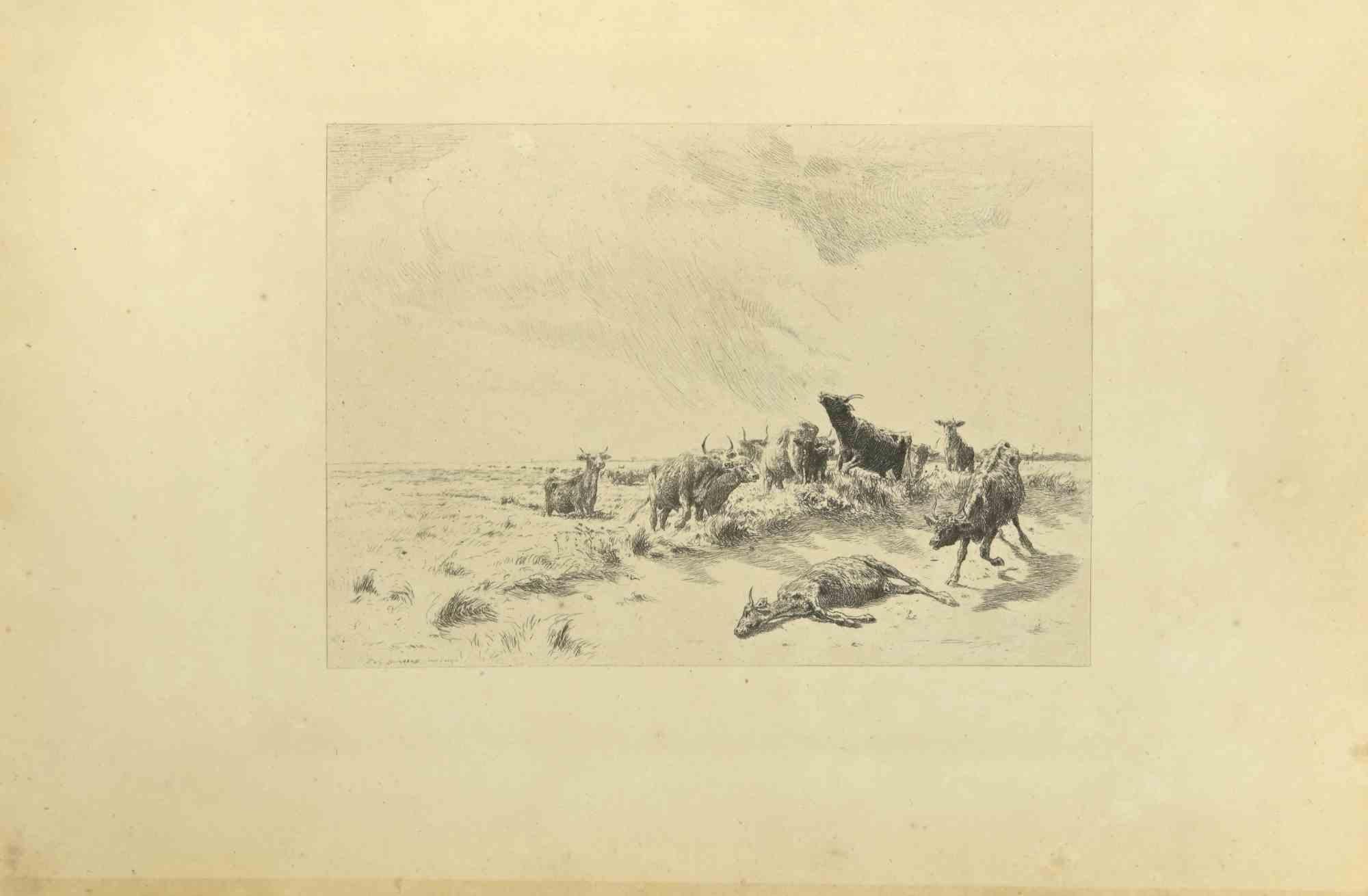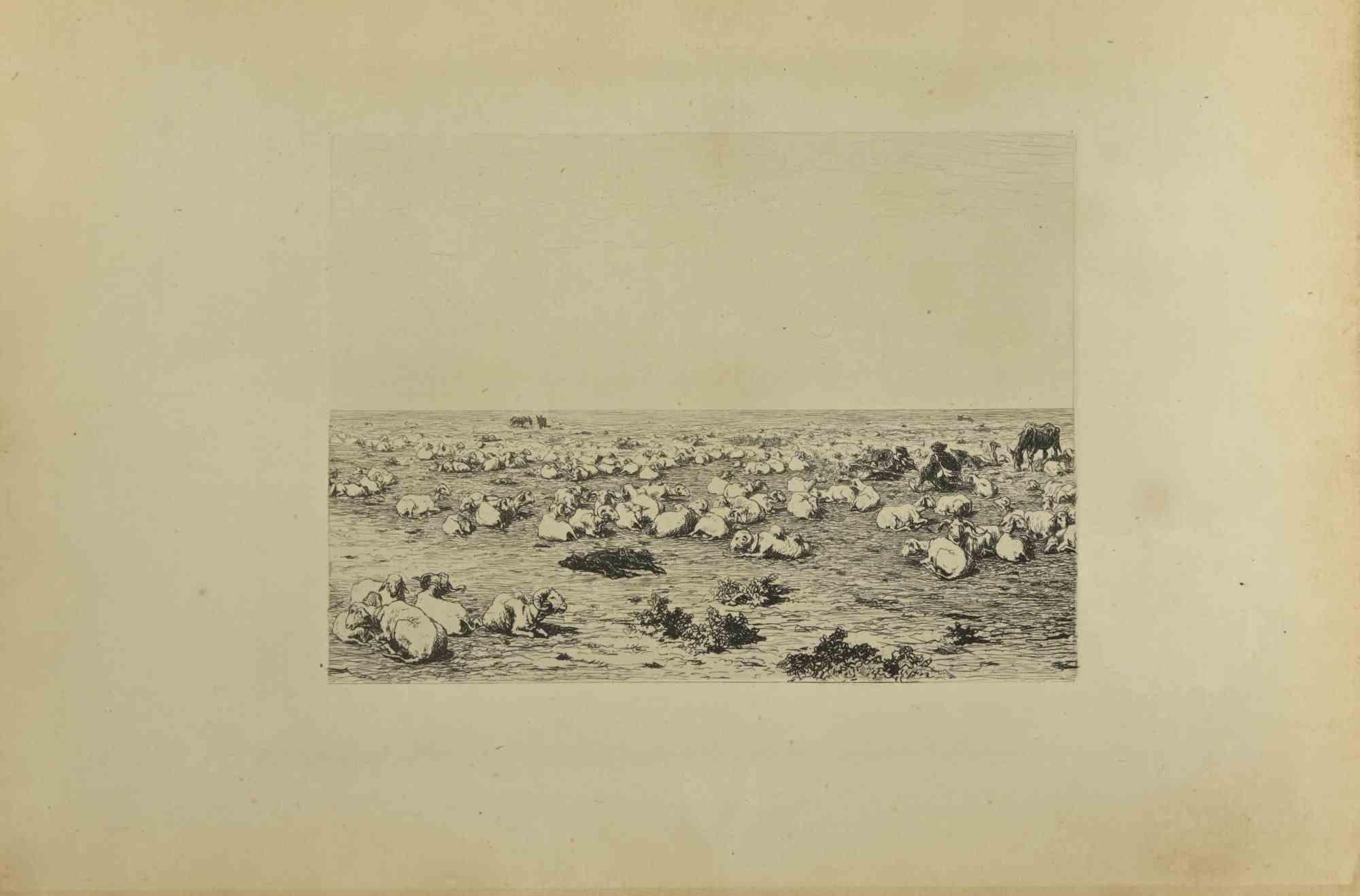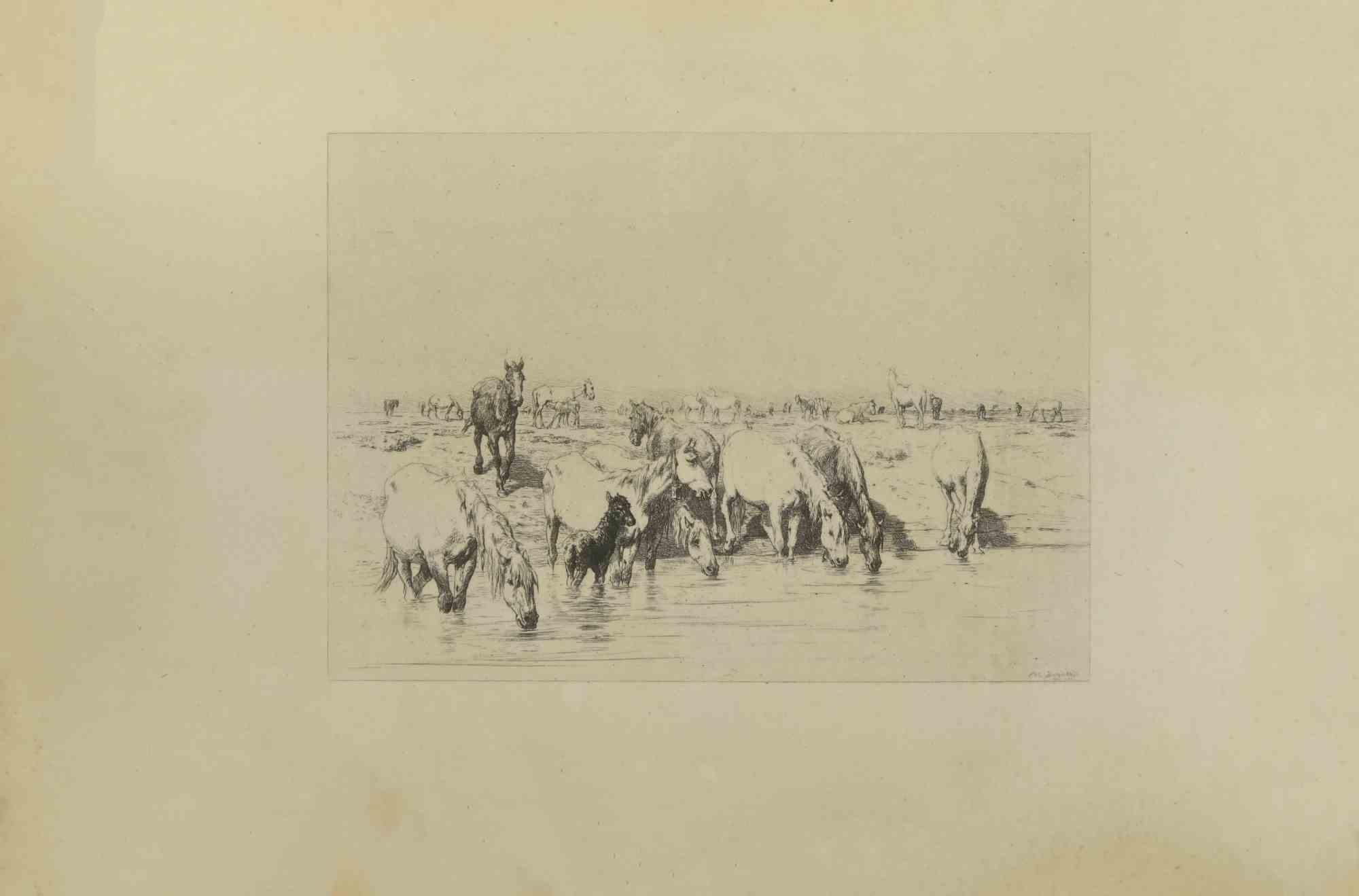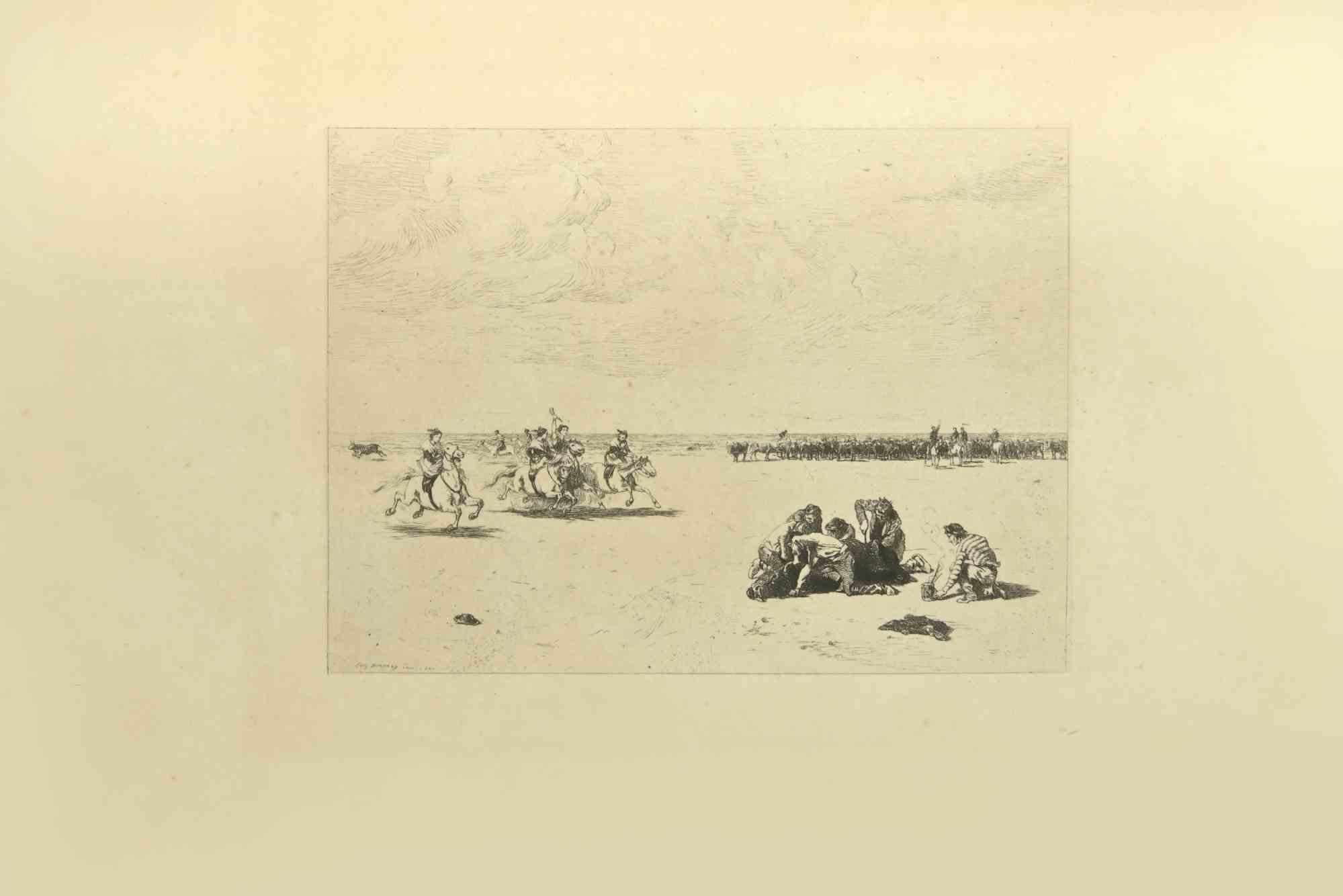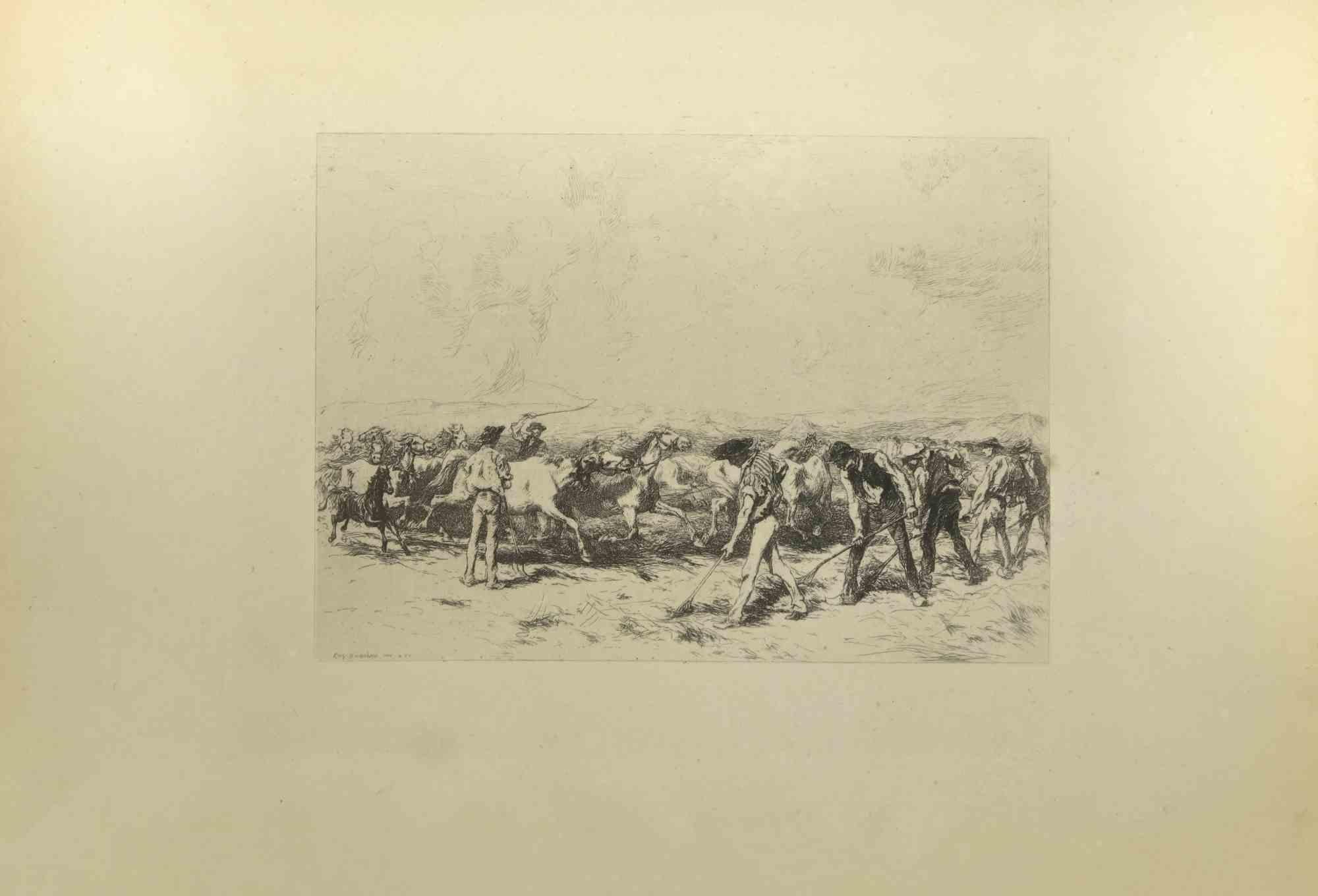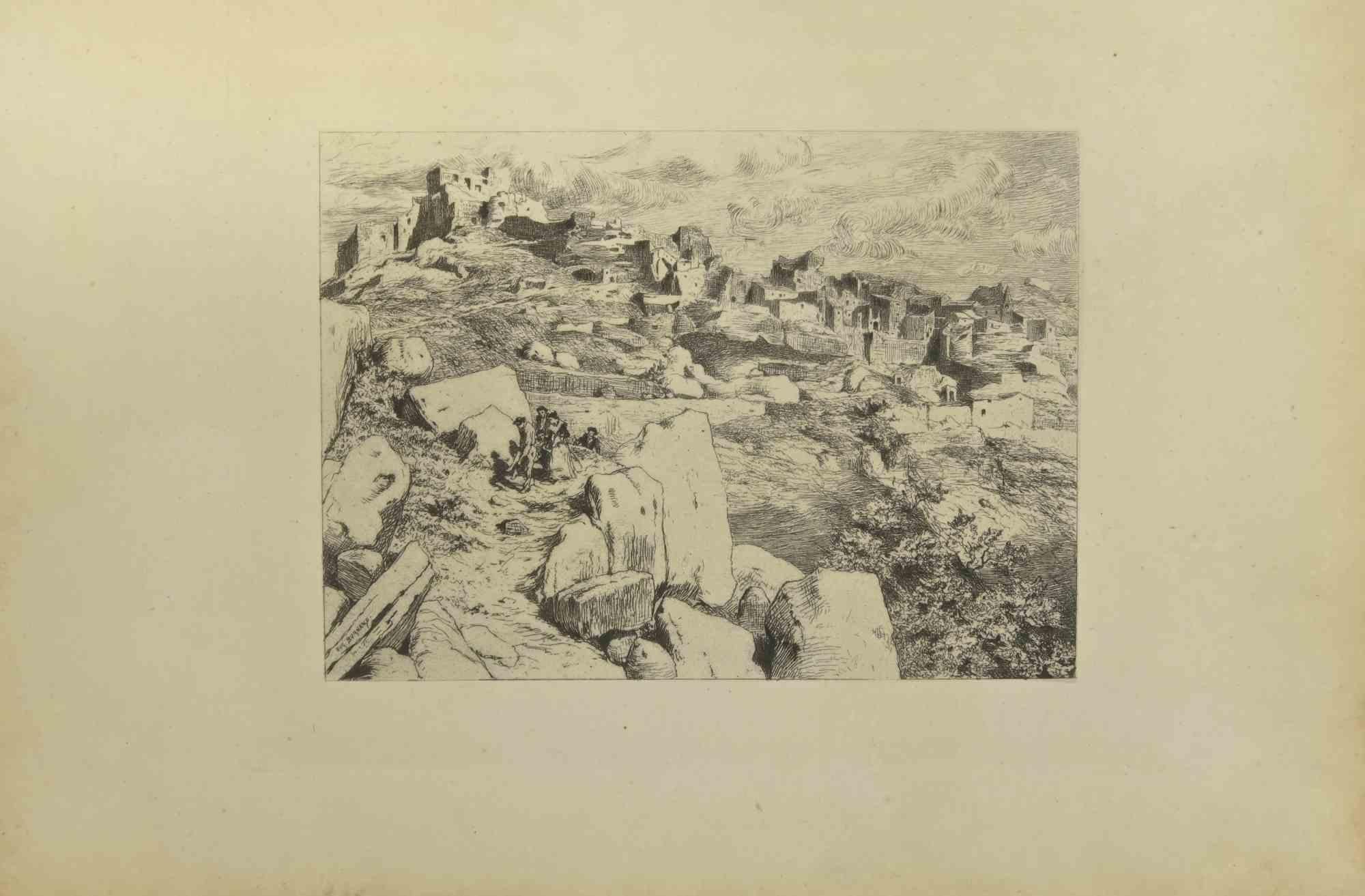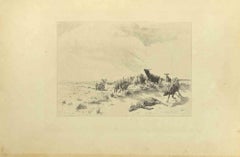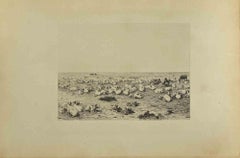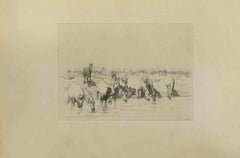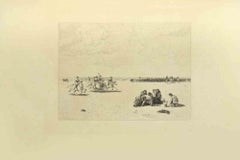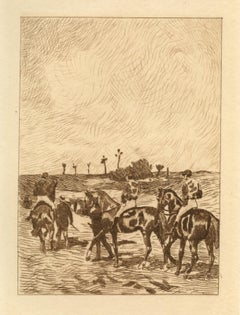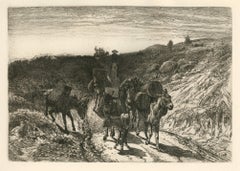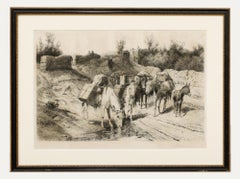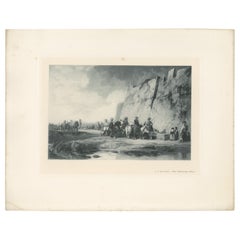Items Similar to The Descent of the Herds - Etching by Eugène Burnand - Late 19th century
Want more images or videos?
Request additional images or videos from the seller
1 of 2
Eugène BurnandThe Descent of the Herds - Etching by Eugène Burnand - Late 19th centuryLate 19th century
Late 19th century
$141.61
$236.0240% Off
£107.61
£179.3640% Off
€120
€20040% Off
CA$198.97
CA$331.6240% Off
A$218.16
A$363.6140% Off
CHF 114.05
CHF 190.0840% Off
MX$2,612.93
MX$4,354.8840% Off
NOK 1,438.71
NOK 2,397.8640% Off
SEK 1,349.51
SEK 2,249.1940% Off
DKK 914.40
DKK 1,524.0140% Off
About the Item
The Descent of the Herds is an etching realized by Eugène Burnand (1850-1921) in the Late 19th century.
Good conditions with foxing.
The artwork is realized through short and deft strokes, an admirable scene created by realistic mastery through well-application of chiaroscuro.
- Creator:Eugène Burnand
- Creation Year:Late 19th century
- Dimensions:Height: 7.49 in (19 cm)Width: 10.63 in (27 cm)Depth: 0.08 in (2 mm)
- Medium:
- Movement & Style:
- Period:
- Framing:Framing Options Available
- Condition:Insurance may be requested by customers as additional service, contact us for more information.
- Gallery Location:Roma, IT
- Reference Number:Seller: T-1415601stDibs: LU650312864892
About the Seller
4.9
Platinum Seller
Premium sellers with a 4.7+ rating and 24-hour response times
1stDibs seller since 2017
7,787 sales on 1stDibs
Typical response time: 1 hour
- ShippingRetrieving quote...Shipping from: Monaco, Monaco
- Return Policy
Authenticity Guarantee
In the unlikely event there’s an issue with an item’s authenticity, contact us within 1 year for a full refund. DetailsMoney-Back Guarantee
If your item is not as described, is damaged in transit, or does not arrive, contact us within 7 days for a full refund. Details24-Hour Cancellation
You have a 24-hour grace period in which to reconsider your purchase, with no questions asked.Vetted Professional Sellers
Our world-class sellers must adhere to strict standards for service and quality, maintaining the integrity of our listings.Price-Match Guarantee
If you find that a seller listed the same item for a lower price elsewhere, we’ll match it.Trusted Global Delivery
Our best-in-class carrier network provides specialized shipping options worldwide, including custom delivery.More From This Seller
View AllHerd - Etching by Eugène Burnand - Late 19th century
Located in Roma, IT
Herd is an original etching realized by Eugène Burnand (1850-1921) in the Late 19th century.
Signed on the plate.
Good conditions with foxing.
The a...
Category
Late 19th Century Old Masters Figurative Prints
Materials
Engraving, Etching
$141 Sale Price
40% Off
The Herd - Etching by Eugène Burnand - Late 19th century
Located in Roma, IT
The Herd is an original etching realized by Eugène Burnand (1850-1921) in the Late 19th century.
Good conditions with foxing.
The artwork is realized through short and deft stroke...
Category
Late 19th Century Modern Figurative Prints
Materials
Engraving, Etching
Herd of Horses - Etching by Eugène Burnand - Late 19th century
Located in Roma, IT
Herd of Horses is an original etching realized by Eugène Burnand (1850-1921) in the Late 19th century.
Signed on the plate.
Good conditions with foxing.
The artwork is realized t...
Category
Late 19th Century Old Masters Figurative Prints
Materials
Engraving, Etching
Horse Drivers - Etching by Eugène Burnand - Late 19th century
Located in Roma, IT
Horse Drivers is an etching realized by Eugène Burnand (1850-1921) in the Late 19th century.
Signed on the plate.
Good conditions with foxing.
The artwork is realized through sho...
Category
Late 19th Century Old Masters Figurative Prints
Materials
Engraving, Etching
The Framers - Etching by Eugène Burnand - Late 19th century
Located in Roma, IT
The Framers is an original etching realized by Eugène Burnand (1850-1921) in the Late 19th century.
Signed on the plate.
Good conditions with foxing.
The artwork is realized thro...
Category
Late 19th Century Modern Figurative Prints
Materials
Engraving, Etching
Hillside - Etching by Eugène Burnand - Late 19th century
Located in Roma, IT
Hillside is an original etching realized by Eugène Burnand (1850-1921) in the Late 19th century.
Signed on the plate.
Good conditions with foxing.
...
Category
Late 19th Century Modern Figurative Prints
Materials
Engraving, Etching
You May Also Like
(after) John Lewis Brown - "Chevaux de course" etching
By John Lewis Brown
Located in Henderson, NV
Medium: etching (after the painting). This beautiful piece was etched by Auguste Lauzet after John Lewis Brown, and published in Paris in 1892 by Chamerot ...
Category
1890s Prints and Multiples
Materials
Etching
"A Burro Train, New Mexico" original etching
By Peter Moran
Located in Henderson, NV
Medium: original etching. Catalogue reference: White 1. This impression on laid paper was printed in 1880 for The American Art Review. The plate measures 6 1/2 x 9 3/8 inches; the sh...
Category
1880s Landscape Prints
Materials
Etching
Peter Moran (1841-1914) - Framed Etching, On the Road to Santa Fe
By Peter Moran
Located in Corsham, GB
An original etching by Peter Moran (1841-1914). On the Road to Santa Fe. Presented in a Hogarth style frame with an antique white mount. Signed in plate to the lower right and again ...
Category
Late 19th Century Animal Prints
Materials
Etching
Antique Print of 'The Watering Place' made after A.G. Decamps (1902)
Located in Langweer, NL
Antique print titled 'The Watering Place'. Original antique print on chine collé made after a painting by A.G. Decamps. This print originates from volume 3 of the series 'The Wallace...
Category
Early 20th Century Prints
Materials
Paper
Coursing Scene, etching by Samuel Alken
By Samuel Alken Jnr.
Located in London, GB
Samuel Alken
Coursing Scene
Lithograph with hand colouring
25 x 42 cm
Samuel Alken Jr. (1784–1825) was a British artist and engraver, part of the prominent Alken family of painter...
Category
Early 19th Century Realist Landscape Prints
Materials
Etching
After Henry Alken - Early 20th Century Lithograph, Nearing the Journey's End
Located in Corsham, GB
A crisp early 20th century lithograph with hand colouring, after English painter and engraver Henry Thomas Alken (1785-1851). The scene shows a period coaching party near their journ...
Category
20th Century Figurative Prints
Materials
Lithograph
More Ways To Browse
Engraving Flemish
Ensor Etching
Eugene Hawkins
Eugenio Granell
Femme Nue Couchee
Frank Benson Etchings
Georges Braque Greek
Henri Privat Livemont
Henry Moore 1949
Henryk Tomaszewski
Hockney Ipad Drawings
Invader Rubik
Japanese Woodblock Prints Kabuki
Jean Baptiste Le Prince
Joseph Margulies
Keith Haring Growing
Keith Haring Skateboard
Leroy Neiman Lithograph
